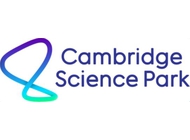How novel an in vitro Liver-on-a-Chip model of fatty liver disease is being used to help prevent a global healthcare crisis
- Date 1 Feb 2021
Obesity is a global epidemic. Up to a third of the USA’s adult population is now obese and worldwide, the prevalence of obesity has almost tripled since the 1970s. Increased obesity has triggered a wave of serious associated health conditions, notably cardiovascular disease, type-two diabetes and cancers.
Also on the rise and also associated with obesity is Metabolic-Associated Fatty Liver Disease, or MAFLD, alternatively known as non-alcoholic fatty liver disease (NAFLD). The early stage of MAFLD, a fatty liver, is relatively harmless and reversible, however it can progress to non-alcoholic steatohepatitis (NASH) where the liver becomes inflamed and fibrotic. Chronic inflammation can lead to cirrhosis, a severe and irreversible replacement of functional liver cells with scar tissue, for which the only current cure is transplantation. NASH is already one of the leading causes of liver transplantation in the USA, however, projections suggest it will soon overtake hepatitis as the predominant cause, thereby becoming a huge economic burden.
In response, a huge amount of research and development effort has focussed on developing anti-NASH therapeutics. Despite this, not one drug candidate has made it through human trials and approved for use. This begs the questions – how can we gain a more comprehensive understanding of this disease? How can we more accurately model the human disease? How can we better predict human responses?
A recent publication from Dr. Michele Vacca (Clinical Research Associate) at the University of Cambridge, addresses these questions with a “sum is greater than the parts” approach to achieving their research goal of teasing apart the complex, overlapping and multi-faceted inflammatory pathways involved in liver fibrosis to identify key, potentially “druggable”, players in NASH.
Key to developing druggable targets for the treatment of fatty liver disease, is a comprehensive understanding of the role that inflammation plays in the progression of MAFLD to NASH and cirrhosis. Dr. Vacca’s research focuses on one of the most important signalling pathways in the development of liver fibrosis, the TGFb pathway. TGF. If you are keeping up thus far, the situation is further complicated by the fact that some ligands can activate both canonical and non-canonical branches of the signalling cascade. One such ligand is Bone morphogenic protein 8B (BMP8B). Almost absent in a normal human liver, expression increases with MAFLD disease progression, and as such, Dr. Vacca asked the question: what is the role of BMP8B in NASH?
To find the answer, a range of traditional methods were employed, including 2D cell culture and animal models of NASH, however, when it comes to physiological relevance, each approach has its limitations. For example, 2D cell culture models are simple, cost-effective, and convenient but lack “real-life” complexity. Primary hepatocytes cultured in 2D do not retain their identity for long, behaving much more like cancer cells. Such shortfalls can be countered by using animal models to help confirm findings; however, inter-species differences can and do deliver results that lack translatability into humans. To help navigate his way through these challenges, Dr. Vacca looked for a complimentary solution to bridge knowledge gaps and confirm discoveries. He found CN Bio’s in vitro human-relevant NASH disease model.
Using CN Bio’s Liver-on-a-Chip approach, (alternatively known as Liver Microphysiological System), primary human hepatocytes may be cultured for up to 4 weeks under constant perfusion without loss of identity. Additionally, multiple human cell types (for example hepatocytes and Kupffer and stellate cells) can be co-cultured to form 3D liver microtissues that more accurately emulate the human liver and its microarchitecture. By challenging the model with fatty acids, a disease state can be induced which mimics human NASH with a high degree of accuracy, providing a suitable system in which to study signalling pathways such as the TGFb/BMP pathway.



